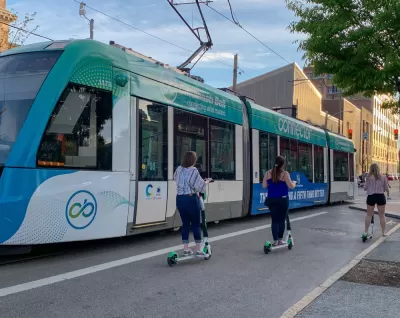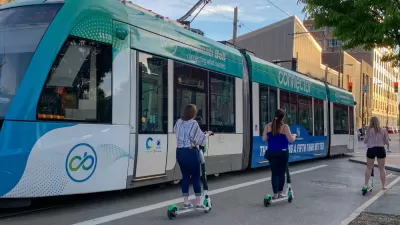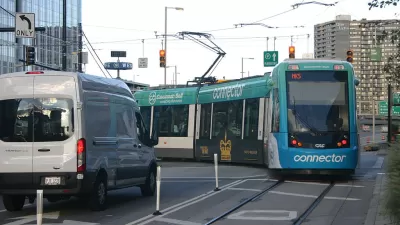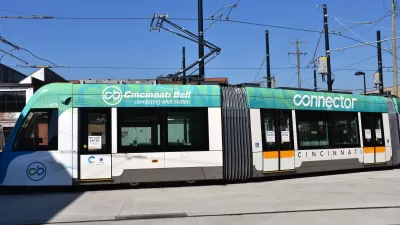The Cincinnati Bell Connector has been offering free rides since reopening in October, but the Cincinnati City Council recently decided to make the free rides a permanent feature.

"Since reopening after a pandemic-related suspension, Cincinnati's streetcar has not charged fares for passengers to ride. Starting [November 1], that change will become permanent," reports Pat LaFleur.
The free ride rely on a fare-free operations structure first implemented as a 60-day measure in September, according to LaFleur. In addition to the benefits of free rides, streetcar riders are also expected to benefit from improved service performance, as the time for paying fare has been removed from the boarding equation.
"Given the pandemic-related, months-long streetcar shutdown, and now having operated fare-free for the last two months, recent data regarding how much fare revenue the streetcar collected on a daily basis is scarce and unreliable," writes LaFleur. "In a May 2019 memo, then-City Manager Patrick Duhaney estimated that the Connector had brought in roughly $330,000 in fares in 2018, but the cost to collect those fares -- including printing the tickets, maintaining the ticket vending machines and paying fare inspectors -- offset that revenue by nearly $260,000."
The article also includes details of Mayor John Cranley's counter proposal, which failed to gain the political traction over the fare-free idea.
FULL STORY: Cincinnati streetcar will go fare-free permanently starting Nov. 1

Alabama: Trump Terminates Settlements for Black Communities Harmed By Raw Sewage
Trump deemed the landmark civil rights agreement “illegal DEI and environmental justice policy.”

Study: Maui’s Plan to Convert Vacation Rentals to Long-Term Housing Could Cause Nearly $1 Billion Economic Loss
The plan would reduce visitor accommodation by 25% resulting in 1,900 jobs lost.

Why Should We Subsidize Public Transportation?
Many public transit agencies face financial stress due to rising costs, declining fare revenue, and declining subsidies. Transit advocates must provide a strong business case for increasing public transit funding.

Paris Bike Boom Leads to Steep Drop in Air Pollution
The French city’s air quality has improved dramatically in the past 20 years, coinciding with a growth in cycling.

Why Housing Costs More to Build in California Than in Texas
Hard costs like labor and materials combined with ‘soft’ costs such as permitting make building in the San Francisco Bay Area almost three times as costly as in Texas cities.

San Diego County Sees a Rise in Urban Coyotes
San Diego County experiences a rise in urban coyotes, as sightings become prevalent throughout its urban neighbourhoods and surrounding areas.
Urban Design for Planners 1: Software Tools
This six-course series explores essential urban design concepts using open source software and equips planners with the tools they need to participate fully in the urban design process.
Planning for Universal Design
Learn the tools for implementing Universal Design in planning regulations.
Smith Gee Studio
Alamo Area Metropolitan Planning Organization
City of Santa Clarita
Institute for Housing and Urban Development Studies (IHS)
City of Grandview
Harvard GSD Executive Education
Toledo-Lucas County Plan Commissions
Salt Lake City
NYU Wagner Graduate School of Public Service





























